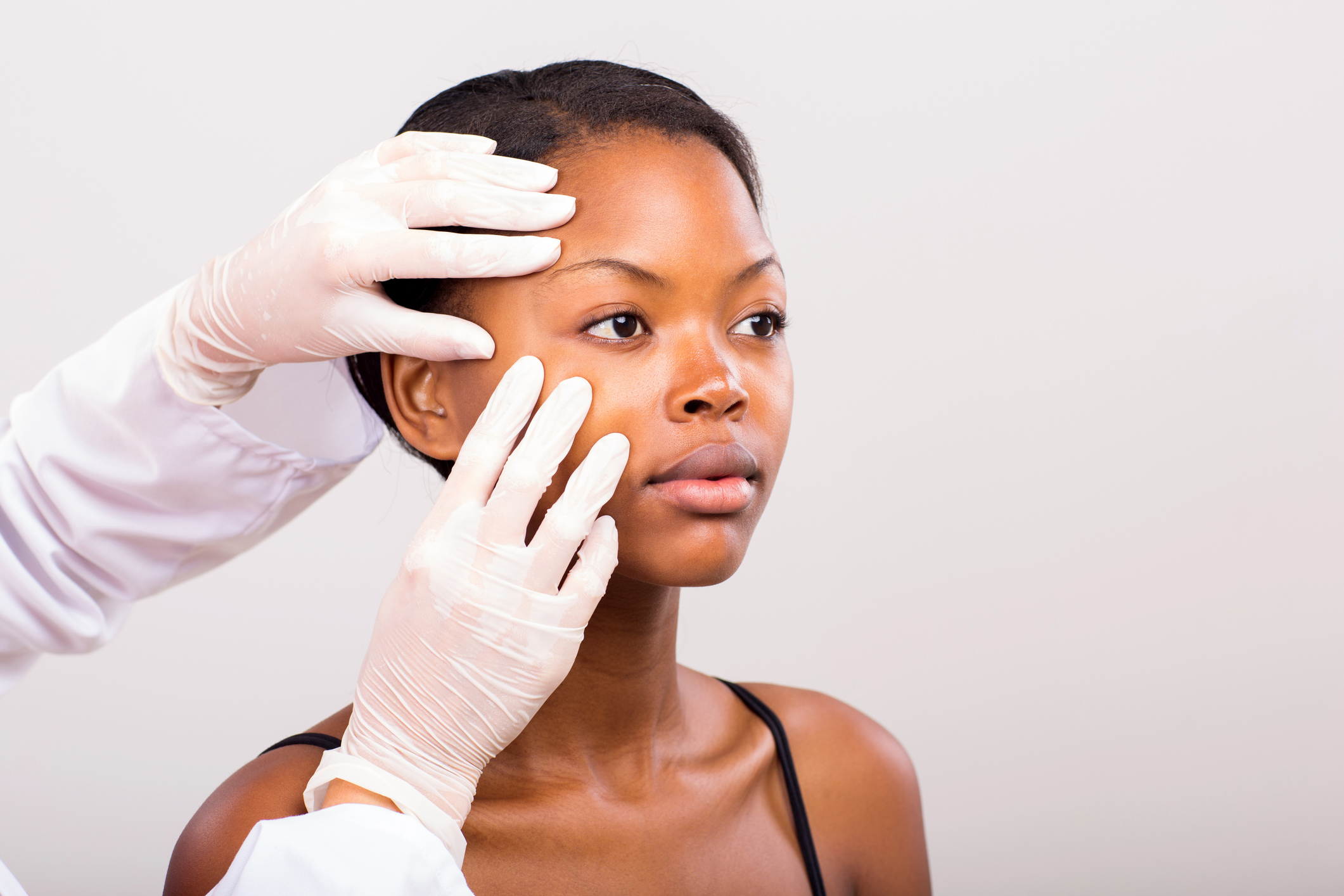Joining Dr. Woolery-Lloyd are Shasa Hu, M.D., FAAD, as director of cosmetic dermatology, and most recently, Laura Scott, M.D., FAAD, as associate director for the Skin of Color Division. Following her training at Harvard Medical School, Dr. Scott came to the University of Miami for her dermatology residency and received mentoring from Dr. Woolery-Lloyd in skin of color care.
Treating skin and hair conditions is still a significant unmet need across the country, Dr. Woolery-Lloyd said. Some basic differences are encountered by people of color – a group that includes Latinos, Asians and people of African descent: “The melanocyte (which makes the brown color) is more reactive, causing light or dark spots,” she said. “For example, a pimple or mosquito bite can result in a dark mark on the skin that can last four months or longer, and oftentimes patients feel that pigment changes can be brushed off by other providers not accustomed to treating people with darker skin.”
Hair loss and scalp disorders also can look different in people of color. Dr. Woolery-Lloyd and her partners may be able to pinpoint the cause. “A scalp condition may be an allergic reaction to a particular hair gel or hair glue, for example,” she said.
“For a lot of patients, what draws people to us is the reassurance that we can diagnose exactly what they have,” Dr. Woolery-Lloyd continued. “We’re providing them with the confidence that even though they may have a challenging skin issue, we’re experts who can create a treatment plan tailored for them.”
Customized Services for People of Color
The Skin of Color Division sees men and women of color for both medical and cosmetic skin conditions.
“We see anything and everything that falls under medical dermatology – whether it be a patient with skin of color who has psoriasis, atopic dermatitis, or acne,” Dr. Scott said. “We also see quite a few connective tissue diseases like lupus, dermatomyositis, and scleroderma that come with rashes and leftover dark marks that can sometimes be misdiagnosed.”
“As specialists in skin of color, we have the clinical and academic interest to bring our patients the most up-to-date treatments, and get them diagnosed quickly and accurately,” Dr. Woolery-Lloyd said. “What may seem like rare conditions to most people, we’ve seen hundreds of times. For common conditions, we’re sensitive to the needs of the patient and can reassure them. We also know the latest research in the not-so-common diseases.”
Subspecialized Interests
Both Drs. Scott and Woolery-Lloyd address a wide range of pigment and hair conditions, including light and dark spots on the skin and hair loss.
Dr. Scott has a particular interest in treating acne, one of the most common skin disorders among patients seeking dermatologic care.
In addition, she said, “One of my passions is treating skin problems during pregnancy. Women can develop melasma – dark patches oftentimes on the cheeks, sometimes called the mask of pregnancy. Pregnant women also can have acne flare-ups and other pigmentation issues, and it’s important they know that we have medicines that can manage these conditions safely during pregnancy and breastfeeding.”
Dr. Woolery-Lloyd is a proponent of healthy skin care practices and making lifestyle changes to improve conditions such as acanthosis nigricans, a skin disorder that produces velvety, dark, thick patches of skin in skin folds and creases and is associated with diabetes.
Dr. Hu specializes in cosmetic procedures in skin of color patients, including treatments like microneedling for melasma and filler in line with patients’ unique cultural standards of beauty. She and Drs. Woolery-Lloyd and Scott all are skilled in performing chemical peels, microneedling for wrinkling and fine lines, botox, fillers and laser hair removal. They also use platelet rich plasma treatments with microneedling for facial scarring and hair loss.
“Our aim is always to fine tune treatment to what is culturally relevant to that patient,” Dr. Woolery-Lloyd said.
Original post https://alertarticles.info


